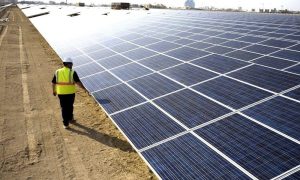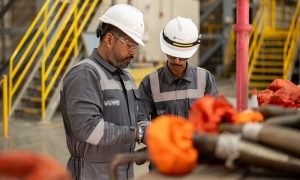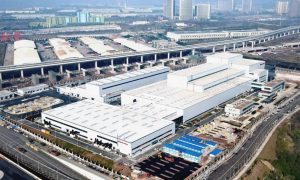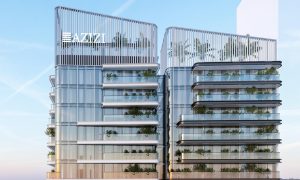Energy efficiency to achieve greener buildings
Improving the energy performance of buildings is a key element in the fight against climate change says ACCIONA ME’s Luis Carlos Barroso
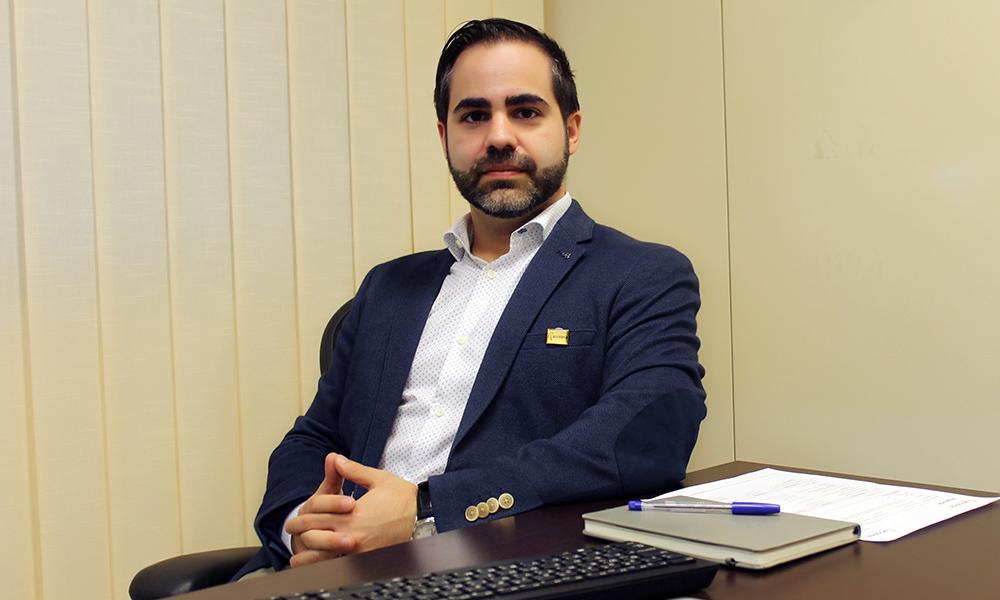
Cities have become one of the most populated places in the world. Their growth changes every year with the increase and arrivals of new inhabitants, and it is estimated that this growth will go on increasing over the next few years. According to the latest United Nations report (UN), 68% of the population will live in cities in 2050 and the building sector has enormous potential to mitigate the impact of climate change in both developed and developing countries.
This scenario means that the main cities have the challenge of becoming ‘Smart Cities’ or intelligent cities. By making the most out of the energy resources and taking advantage of Information and Communication Technology (ICT) data, it is possible to create better infrastructure and city asset management, which promotes a more balanced urban planning.
Smart Cities create great business opportunities for both the public and the private sectors. One of them involves the optimisation of the energy resources through energy efficiency technologies. Energy efficiency is the series of actions that allows optimisation of the relationship between the quantity of energy consumed and the final products and services obtained: making more from less.
The aim is to reduce the energy consumption of a given asset, and then share the associated savings between the client and the sustainability expert company. In this way, both parties have a tangible – and quite fast – profit along with a reduction of the carbon footprint for decades to come. For some years now, there has been a growing interest in improving energy efficiency on the part of companies and public administrations.
The opportunity to make use of these technologies in the Middle East are significant since buildings in this region require heavy cooling systems to cope with the extreme seasonal heat and other energy-hungry equipment. The implementation of energy efficiency procedures in those buildings along with the commitment to renewable energies are paving the way to drastically decrease the impact to the environment.
It is important to create awareness on energy efficiency practices and to initiate more retrofitting of existing – inefficient – buildings and projects to reduce the overall energy consumption.

The residential sector is responsible for the consumption of almost 47% of the GCC’s total energy, against a global average of 25%. Considering that there are 25,000+ ongoing construction projects in the GCC right now, it is extremely important to join forces, address current challenges and harness the immense opportunities that lie ahead. Systems, hardware and equipment must be updated and appropriately maintained to reach a balance between energy and water savings. Should we not take corrective measures to improve energy efficiency in the building sector, energy demand is expected to rise every year.
One of the key drivers to attain more intelligent buildings and system integration is through the energy savings that can be achieved. Evaluation of occupancy patterns, application of daylight, heating, ventilation, and air conditioning (HVAC) and lighting sensors in appropriate locations are only a few examples.
A report published in October 2016 by the International Renewable Energy Agency (IRENA) noted that cities account for 65% of global energy used and 70% of manmade carbon emissions. This makes optimising energy consumption a fundamental objective of a smart city.
Therefore, efficiency is one of the principles that should govern the work undertaken by all public authorities. Achieving the desired effect by using the least possible resources is an obligation that applies to every area of our public administrations. In recent years, this approach has become increasingly relevant to the way they use energy resources.
Environmental awareness and the growing public concern about the effects of climate change mean that energy efficiency has become not merely our responsibility but also an opportunity, a way to encourage a greater commitment to sustainability throughout society. By consuming energy sensibly and efficiently, public authorities are taking on an educational role and leading by example.
The most modern technologies for analysing millions of readings
The essential first steps towards saving energy involve understanding how that energy is used, how much energy is consumed, and when it is used and to do what. For this reason, it is essential to do an energy audit to understand the current energy consumption patterns and identify areas for improvement. We need to benchmark the building’s energy usage against industry standards or similar buildings to set realistic efficiency goals.

Our technical team design and implement the energy monitoring facilities, which enables the registration of consumption at all manner of facilities and systems (lighting, heating, air conditioning and thermal insulation, etc.), integrating different control solutions. Then we perform a remote real-time follow up of consumption at the facilities and of the operating processes of its customers. This enables a correct analysis of the variations detected with respect to the reference indicators, generating alarms and examining measures and alternatives in transmission and operation, thereby enabling energy consumption and economic expenses to be reduced. The information obtained on the status and energy performance of the facilities enables the technical team to design savings measures and solutions based on customer needs, offering permanent advisory services adjusted to variability in the operation or in the use of energy consumers.
For example, some practices that aim at reducing energy usage and optimise the building’s performance are:
- Upgrade Building Envelope: Insulating walls, roofs, and floors to prevent heat loss or gain. Seal any gaps or cracks in the building envelope to minimise air leakage
- Energy-Efficient Lighting: Replace traditional incandescent bulbs with energy-efficient LED lighting. Install occupancy sensors, daylight sensors, and timers to control lighting usage
- HVAC System Optimisation: Regularly maintenance and service heating, ventilation, and air conditioning (HVAC) systems to ensure they operate efficiently. Consider implementing programmable thermostats and zone control to better manage temperature settings
- Energy Monitoring and Reporting: Implement real-time energy monitoring systems to track energy consumption and identify anomalies. Generate regular reports to assess progress and identify areas for improvement
By applying these analysis techniques examples, all sorts of specific savings and efficiency measures will be implemented, such as changes to how installations are used, the replacement of obsolete or inefficient equipment, and the use of control and automation devices. This will allow a response to isolated alerts raised by unusual consumption and provide information that should lead to operational improvements, the identification of inefficient consumption patterns, etc.
It is imperative to cut down fossil fuel power generation plants in favor of renewable plants and alternative power plants such as waste-to-energy facilities. Newest residential/commercial buildings must meet more stringent energy efficiency targets to accomplish a 30% reduction in energy consumption by 2030. Not being able to do so will leave our future generations struggling with all the negative consequences that climate change will bring.
Improving the energy performance of buildings is a key element in the fight against climate change. With the government sector leading the adoption of retrofit projects across the GCC, we are optimistic that the above goals will be accomplished.








